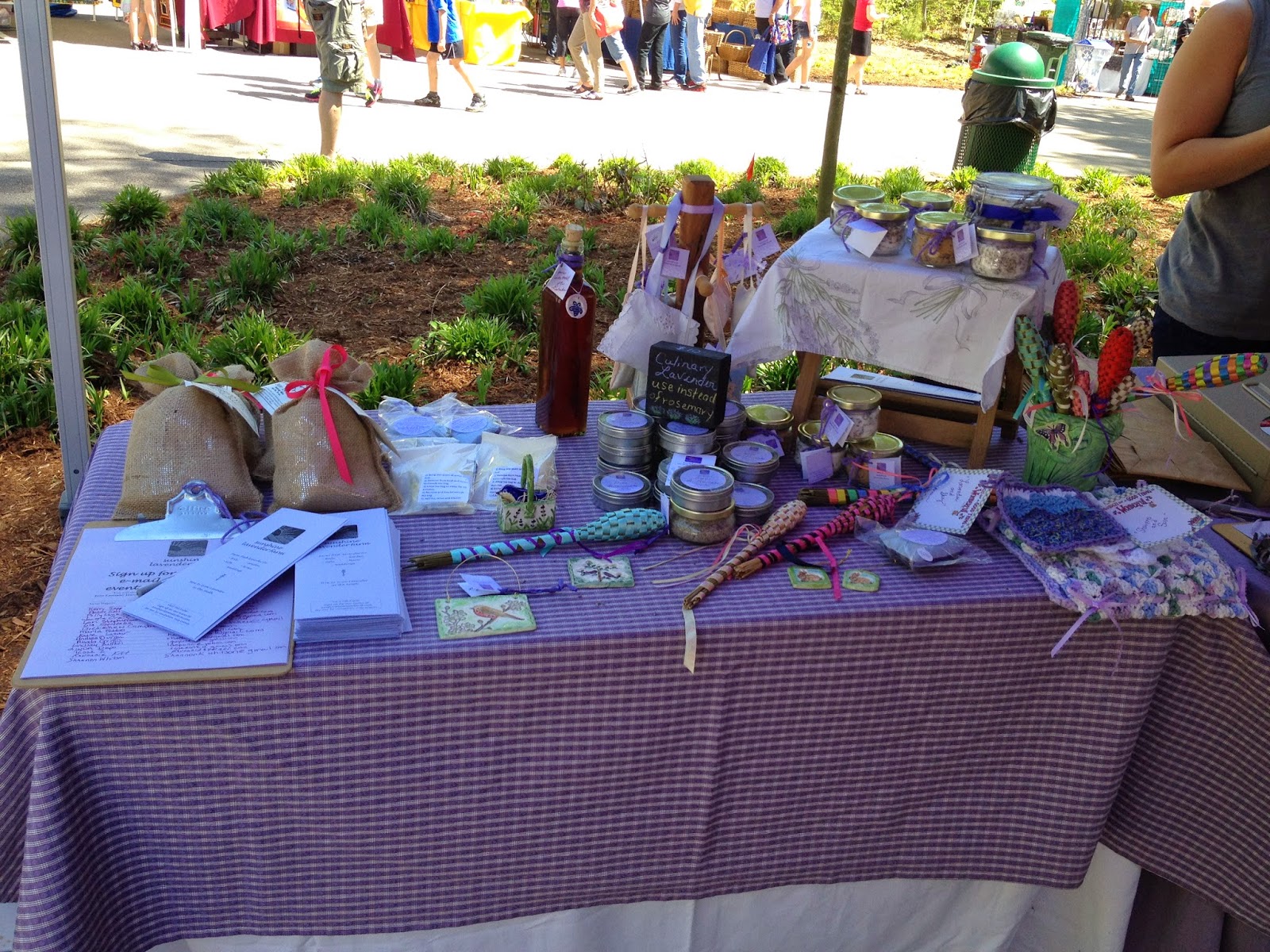Spring Daze has come and gone again for another year...it's by far my favorite show (other than our our Lavender Harvest Celebration in June). The Bond Park in Cary is lovely and it is such a treat to be outdoors, enjoying the spring weather, meeting new "lavender loving" friends and sipping on our freshly made lavender lemonade!
It is also the first time during the year that we offer our high quality 4" lavender plants! I truly enjoy talking to new (and seasoned) customers about our wonderful lavender plants. It's so fun to help individuals understand that lavender can easily be grown here...in North Carolina.
As a special treat, we NOW have several varieties available for sale through our Etsy shop. Please see the plants links below-
Here is the "official" sunshine lavender farm planting guide as a reminder-
PLANTS
There are many lavender varieties that grow well in our area. The lavandins are good choices or Lavandula x intermedia varieties like Grosso and Provence. Lavandula angustifolia, like Hidcote, grows well in our region too. Lavender will thrive when properly planted. Make sure the lavender chosen is hardy in your Planting Zone. The farm is located in Zone 7a.
SOIL
• Well-drained soils or raised beds and containers (outdoors only)
• Sandy/loam or gravelly. Must amend clay.
• Low fertility
• Alkaline soil pH – at least 6.5 or higher.
SOIL PREPARATION
• Create an 18" – 24" mound with well cultivated soil and 2 heaping shovelfuls of 1" round stone worked into the mound. Err on the side of too much stone. May create a French drain by placing fist sized rocks in mound base.
• Using a trowel, dig a hole just deep enough for the plant.
• Add ½ cup total of equal parts of bone meal, lime and well composted manure in the bottom of hole and mix well. The stone will allow the soil to drain, the lime will improve the pH, bone meal and compost for a healthy start.
PLANTING AND TRANSPLANTING
• Water your lavender well in its nursery pot and let it sit for an hour or more before planting.
• Prune the top of the plant to ensure a productive plant.
• Loosen the roots from the potting soil by working the trowel teeth into the soil block.
• Place plant just above the blend of stone, lime, bonemeal and compost, not allowing the roots to touch the blend and gather soil around base of plant. Water deeply
• Space largest plants 5 – 6 feet for good air circulation.
• Lavender blooms at its peak in its third year producing about 1000 stems.
CARE
Herbs thrive on neglect once established. Care for your lavender as you would any new perennial, watering deeply (or measure 1" of rainfall) every 7–10 days for the first two years. When well rooted, lavender is tolerant of heat and dry spells. Water if there is a drought. Caution! Over watering leads to root rot which will cause lavender to die. Prevent weeds by mulching with a light colored mulch like coarse sand, or gravel. Do not use hardwood mulch. The sun will reflect light, keeping the plants dry and help deter disease and enhance bloom and oil production.
PRUNE
Trim off 1/3 of lavender foliage, leaving at least 2–3" of green taking care not to cut into the woody part of the plant, in late winter while dormant, by the end of February (in Zone 7a). Pruning will help the plant grow full and rounded and deter sprawling which can cause the main stems to split and break. Toss a handful of bone meal/lime/compost blend around base of plant in the fall just before rain or water afterwards. The lavender varieties that grow well in our area will bloom from about Memorial Day to July 4th.
Enjoy!




.JPG)










%2B-%2BCopy.JPG)






























